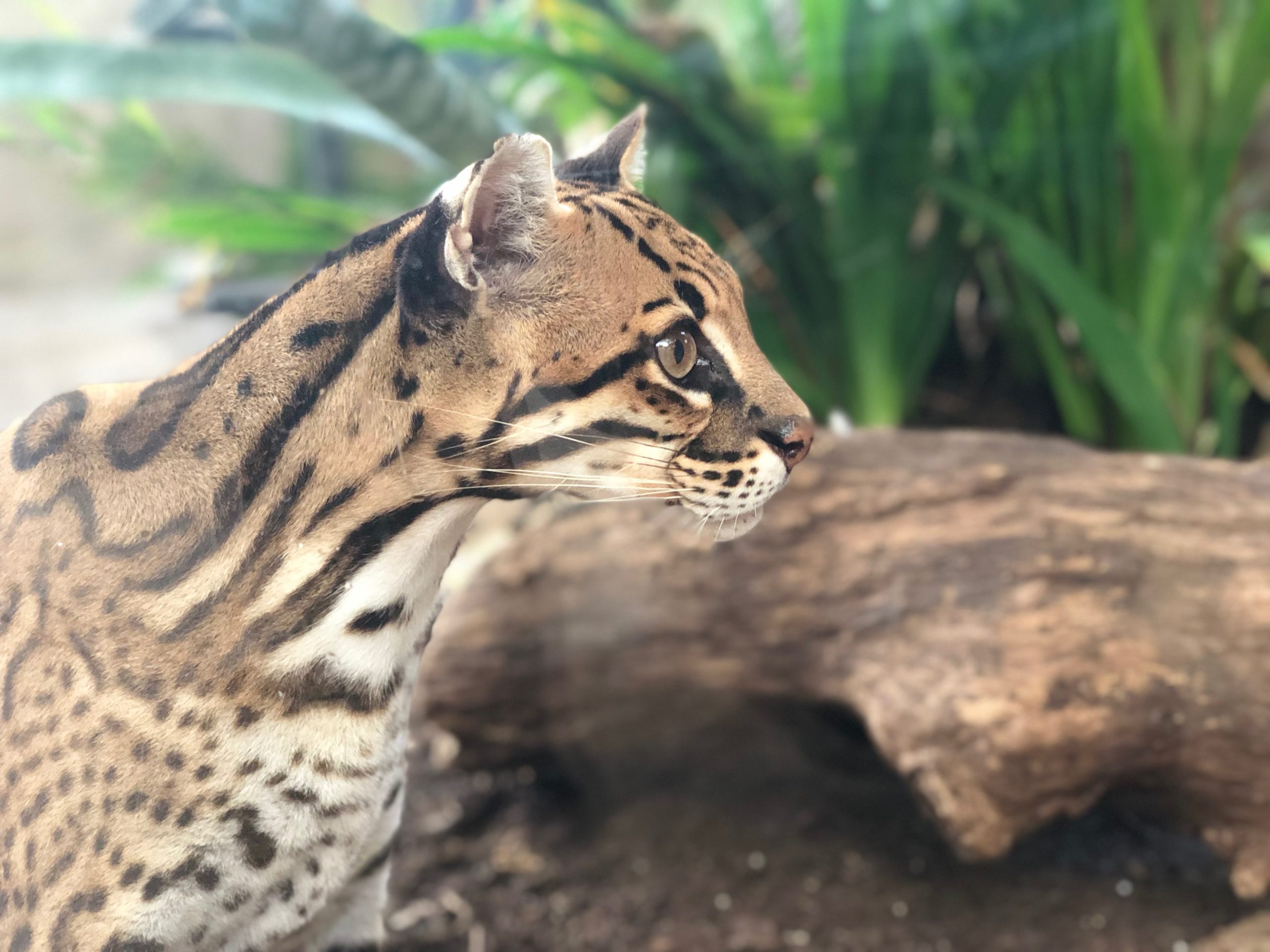Description: Ocelots are known for their beautiful coats. They have a short fur that is marked with both black spots and rosettes. The base color ranges from tawny to reddish brown. Their undersides tend to be lighter or white in color. They have a single, white spot on the back of each ear and some white markings around their eyes and mouth. Two black lines run the length of either side of their face and the tail is marked with black bands. Ocelots have large reddish-brown eyes. They have retractable claws, like most cats, so the claws remain sharp for seizing and holding prey.
Size: They are the largest of the small spotted cats. Length is from 36 to 40 inches (80-100 cm), tail 12 to 20 inches (30-50 cm), height to 18 inches (46 cm) at the shoulder, weight 25-35 pounds (11.3-15.9 kg).
Behavior: Ocelots are opportunistic feeders, taking almost any animal it can overpower, remaining in dense cover when possible. They are strong swimmers, although they do not enter the water readily. Although they seem to prefer ground hunting, they are excellent climbers and occasionally stalk monkeys, iguanas, lizards and birds in trees. Largely nocturnal, their spotted coat makes them quite inconspicuous. They usually sleep during the day in trees or hidden under cover.
Diet: They move quickly and quietly in the undergrowth catching mice, rats, rabbits, pacas, agoutis, peccaries, opossums, frogs, crabs and small turtles.
Senses: These cats have a fixed territory, which they mark with excrement and scent. Their large eyes allow for acute binocular vision and good night vision, adapted for hunting. Hearing is also excellent, even though the ears are relatively short; sense of smell is also quite good. The whiskers are extremely sensitive to touch.
Communication: Although they may often hunt with another Ocelot, they are considered solitary, except during mating and giving birth, sometimes “mewing” to keep in touch with each other.
Reproduction: Gestation varies between 79-85 days. Litter sizes are small, usually only one or two young, with the rare occurrence of three. Only the females care for the young, although males do help by bringing food for the mother. Females prepare dens for their kittens in thick brush. Mothers leave at night to hunt, but spend each day with their kittens in the den. The kittens begin hunting with their mother when they are about three months old and are independent after approximately one year, but may stay with their mother for an additional year. The kittens are darker at birth but otherwise colored like their parents. They are blind at birth, but well-furred.
Habitat/range: Ocelots live in a variety of habitats, including mangrove forests, coastal marshes, savannah grasslands, pastures, thorn scrub and tropical forests. All of these habitats provide dense vegetative cover. They are found in southwestern U.S. (Arizona and Texas), throughout Mexico and Central America and in South America from northern Argentina and Paraguay to Ecuador, but absent from Chile.
Status: They are an ESA species USFW; included in AZA Species Survival Plan® (SSP).



